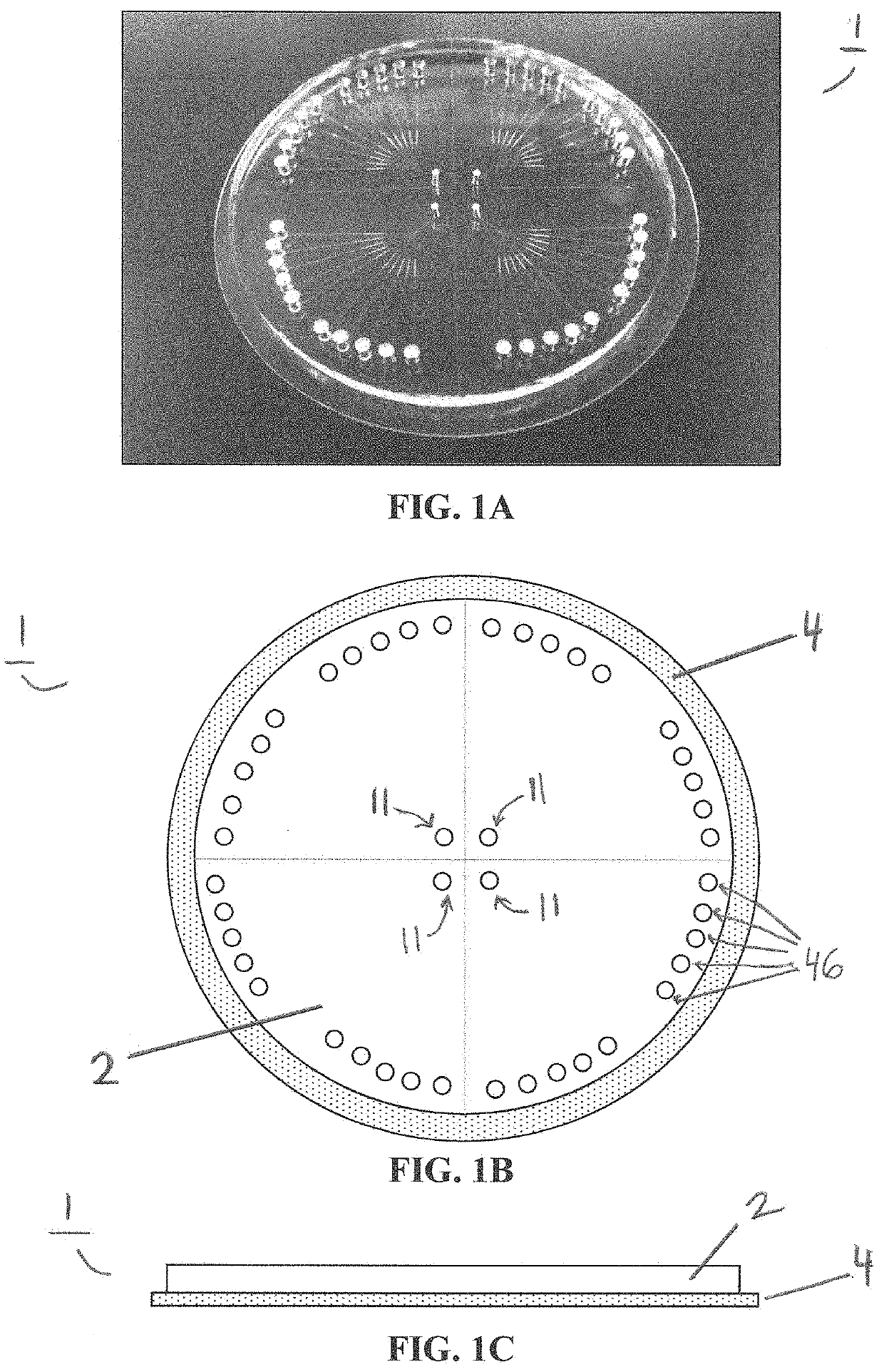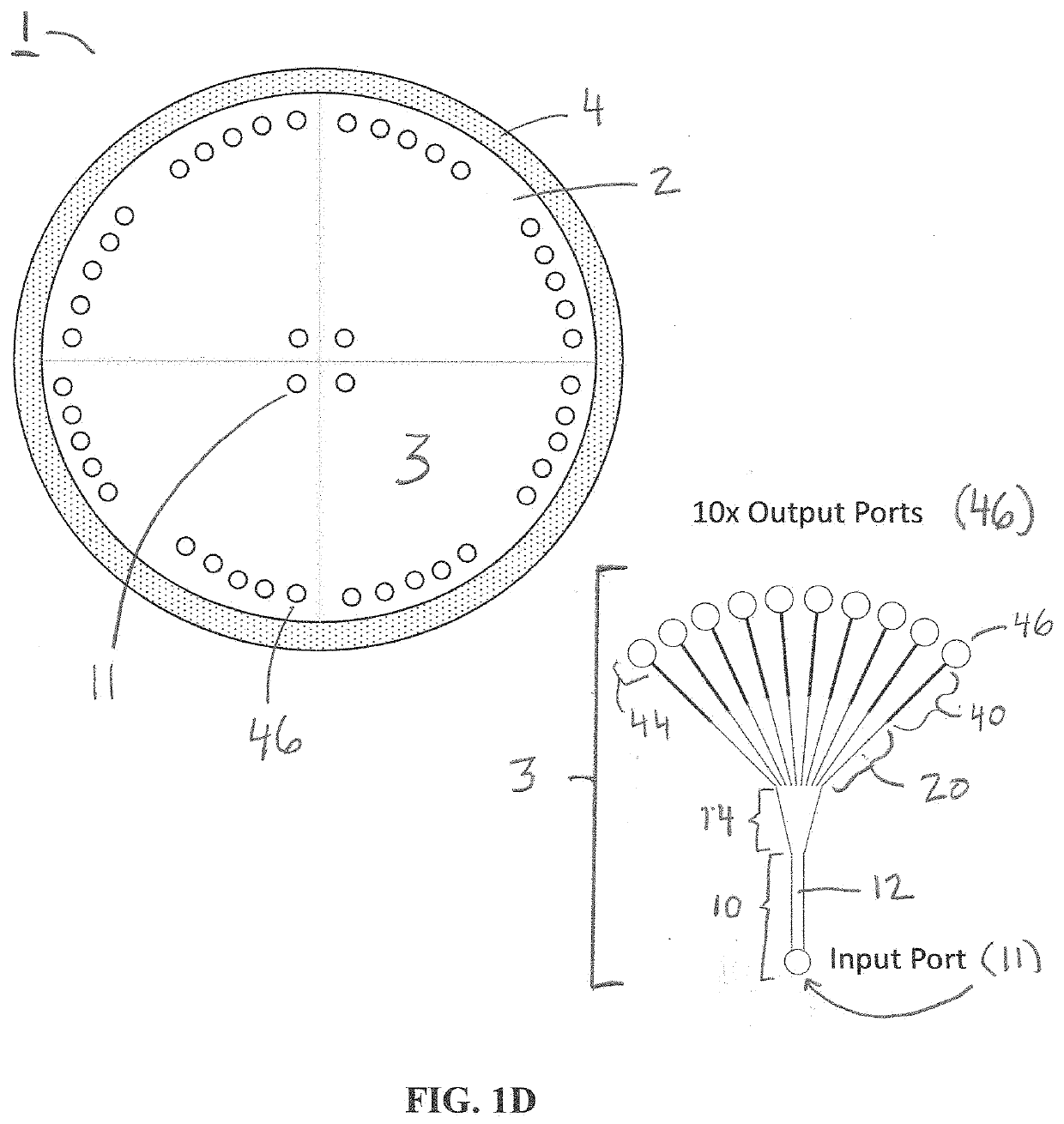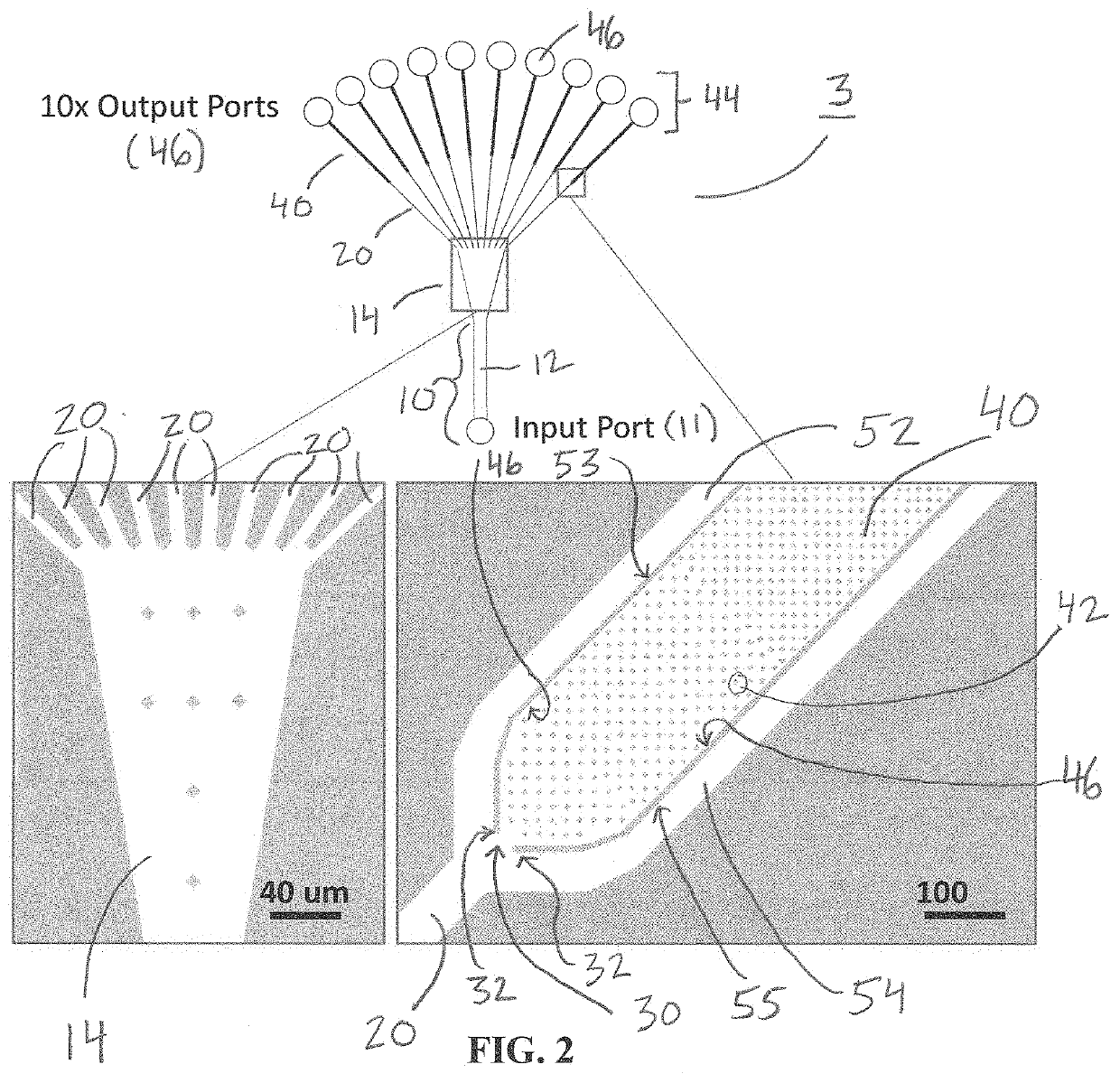Single cell whole genome amplification via micropillar arrays under flow conditions
a micropillar array and whole genome technology, applied in the field of microfluidic devices and systems, can solve the problems of random amplification bias, inability to sequence single cell genomes directly without amplification, and difficulty in single cell handling and analysis
- Summary
- Abstract
- Description
- Claims
- Application Information
AI Technical Summary
Benefits of technology
Problems solved by technology
Method used
Image
Examples
example 1
Single Cell Whole Genome Amplification Via Micropillar Arrays
[0061]Single cell whole genome amplification (WGA) has long suffered from amplification biases that reduce the accuracy of single cell sequencing data. To this end, an easily adoptable process requiring minimal microfabrication complexity remains desirable. Here, we describe genomic amplification via micropillar array (GAMA) on single human cancer cells from the HeLa cell line. This micropillar array is designed to capture single cells and physically entangle its chromosomal DNA in a fixed position throughout WGA. By testing for the presence of 6 gene loci along the human genome, we demonstrate an improved genome coverage and reduced amplification bias using GAMA as opposed to conventional fluorescence activated cell-sorting (FACS) based single cell assays.
[0062]To this end, several techniques have been found to minimize amplification bias during MDA by reducing reaction volumes [20]. Although the mechanism by which reduci...
PUM
| Property | Measurement | Unit |
|---|---|---|
| Diameter | aaaaa | aaaaa |
| Diameter | aaaaa | aaaaa |
| Diameter | aaaaa | aaaaa |
Abstract
Description
Claims
Application Information
 Login to View More
Login to View More - R&D
- Intellectual Property
- Life Sciences
- Materials
- Tech Scout
- Unparalleled Data Quality
- Higher Quality Content
- 60% Fewer Hallucinations
Browse by: Latest US Patents, China's latest patents, Technical Efficacy Thesaurus, Application Domain, Technology Topic, Popular Technical Reports.
© 2025 PatSnap. All rights reserved.Legal|Privacy policy|Modern Slavery Act Transparency Statement|Sitemap|About US| Contact US: help@patsnap.com



